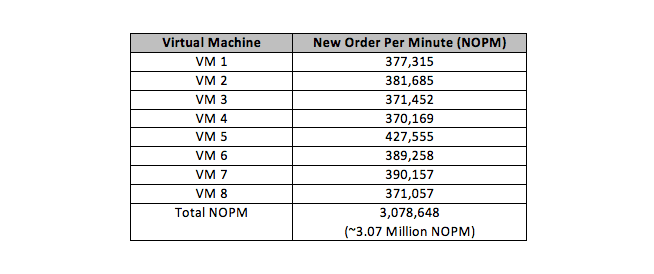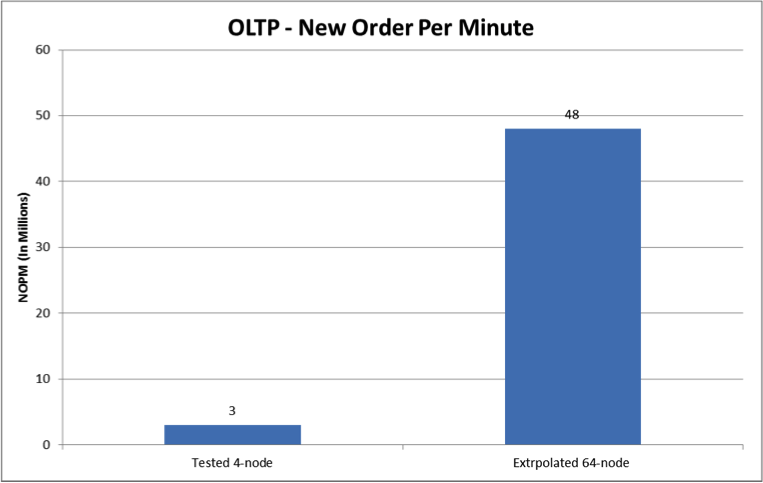Business Critical Applications on VMware Virtual SAN: Extrapolating 48 Million NOPM!
Hello! It’s been a while since I’ve shared my last blog, mostly as I have been so busy working with different OEM partners on enabling VMware Virtual SAN (VSAN) solutions.
VMworld 2015 US is around the corner, taking place next week! My colleague, Beth Caltagirone, has written a nice blog elaborating on SanDisk®’s broad presence and participation at VMworld. You can read the blog here.
In this post, I would like to share some exciting, new results we achieved working with one of our partners, Lenovo. This solution is the first time I have ever seen such a large number achieved for a transaction processing system using VMware Virtual SAN. The white paper and other details will be published post VMworld 2015 US, but I would like to share a glimpse of it with you now, ahead of the show.
Testing Summary
For this solution, we have been working with our partner Lenovo on enabling Virtual SAN for business critical applications. One of the workloads we have chosen to test is an online transaction processing system (OLTP) using SQL Server database
We configured a 4-node all-flash Virtual SAN using Lenovo System X3650 M5 servers. We used 2 VMs in each node (in a 4-node all-flash cluster) and ran the OLTP workload simultaneously on each.

We used “HammerDB”, a database load-testing tool, to create 5,000 OLTP warehouse in each Virtual Machine (VM), simulating real-world online transactions. We ran 8 VMs in this 4-node all-flash VSAN, totaling 40,000 OLTP warehouse (~8TB of Database). This large OLTP database is simulated by running 2,000 users simultaneously.
In simplified terms, this test simulates 2,000 end users simultaneously performing a transaction (e.g. a purchase, checking their order status, looking for inventory, adding to shopping cart etc.) in an 8TB database.
From a VM perspective, each VM was configured with 16 vCPU and 96GB of RAM and with 8 virtual disks storing ~1TB of data. The reason to choose a 16 vCPU is in order to maintain a standard SQL server license. This helps significantly in keeping the cost of the solution low.
Here are the results of our testing for the New Order Per Minute (NOPM):

Conclusion
The test results were no less than astounding and demonstrate that for business critical applications, VMware Virtual SAN is an ideal solution. And as VMware Virtual SAN supports up to a 64-node configuration, by extrapolating this 4-node test results linearly, we can achieve up to 48 million NOPM!

I will be discussing some of our testing and much more in my session on business critical applications at VMworld next week. This and other reference architectures will be featured in a panel session with expert speakers form VMware, Nexenta, SIOS and SanDisk titled: VAPP5737 – Best Practices and Reference Architectures for Software Defined Storage using Flash.
This configuration is currently undergoing testing and we will have additional details published soon in a white paper. The numbers and metrics that will appear in the final document may change slightly from the initial testing results that I’ve shared here, but regardless, this is an incredibly fast system for running business critical applications and databases.
I will be at VMworld in SanDisk booth #1920 and hope to see many of you there. I look forward to discussing the details of the different solutions we offer for hyper-converged infrastructure, especially using software-defined storage technology.
I look forward to seeing you there!




